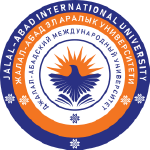Prevalence and Factors Associated with the Utilization of Contraceptives Among Women of Reproductive Age in Jalalabad, Kyrgyzstan
DOI:
https://doi.org/10.63666/ejsmr.1694-9013.2.I.2025.35Keywords:
Contraceptive utilization, reproductive health, socioeconomic factors, maternal healthAbstract
Globally, sexual and reproductive health remains a critical public health concern for women of reproductive age. The utilization of modern contraceptives is essential for managing fertility, reducing unintended pregnancies, abortions, and associated health complications. This study aimed to assess the prevalence and factors associated with contraceptive use among women aged 15–35 years in Jalalabad, Kyrgyzstan. A descriptive cross-sectional study was conducted using online Google Forms over three months (September to November 2024). A structured questionnaire was administered to 150 randomly selected women, and data were analyzed using SPSS version 22.0. Results revealed that 88.7% of respondents were married, 88.7% resided in rural areas, and 35.9% had more than two children, all of which were associated with higher contraceptive use. Conversely, women aged 15–25 years showed lower utilization. The majority of women demonstrated good knowledge of contraceptives, though some reported side effects such as vaginal discharge or irritation. These findings underscore the need to address socioeconomic, geographic, and cultural barriers to enhance contraceptive effectiveness and promote maternal and child health.
References
1. Rastak, L. (2005). Correlation between socio-demographic characteristics and contraceptive methods. Sharecrop University of Medical Sciences Journal, 45-52.
2. Belfield, T. (2009). Principles of contraceptive care: Choice, acceptability and access. Best Practice & Research Clinical Obstetrics & Gynaecology, 23(2), 177-185.
3. United Nations Department of Economic and Social Affairs, Population Division. (2022). World family planning 2022: Meeting the changing needs for family planning: Contraceptive use by age and method.
4. National Research Council. (1989). Contraception and reproduction: Health consequences for women and children in the developing world. National Academies Press.
5. Singh, R., Frost, J., Jordan, B., & Wells, E. (2009). Beyond a prescription: Strategies for improving contraceptive care. Contraception, 79(1), 1-4.
6. Sangi-Haghpeykar, H., Ali, N., Posner, S., & Poindexter, A. N. (2006). Disparities in contraceptive knowledge, attitude and use between Hispanic and non-Hispanic whites. Contraception, 74(2), 125-132.
7. Almalik, M., & Mosleh, S. (2018). Are users of modern and traditional contraceptive methods in Jordan different? Eastern Mediterranean Health Journal, 24(2), 154-162.
8. Track20. (2023). Kyrgyz Republic 2023 summary brief and handout. Retrieved from https://track20.org/download/pdf/Country%20Indicators/2023/2023%20Combo%20Briefs/English/Kyrgyz%20Rep.%202023%20Summary%20Brief%20and%20Handout.pdf
9. Dolonbaeva, Z., et al. (2024). Unmet need for contraception among married women in the Kyrgyz Republic using the datasets from the 2006, 2014 and 2018 Multiple Indicator Cluster Survey: a cross-sectional study. BMC Public Health, 24(1), 977. https://doi.org/10.1186/s12889-024-18518-6
10. Bayramova, L., & Kulczycki, A. (2017). Prevalence and socio-economic factors determining use of modern contraception among married men in Kyrgyzstan: Evidence from a demographic and health survey. Public Health, 142, 56-63. https://doi.org/10.1016/j.puhe.2016.10.008
11. Beyene, K. M., Bekele, S. A., & Abu, M. K. (2023). Factors affecting utilization of modern contraceptive methods among women of reproductive age in Ethiopia. [Journal details from original].
12. Whitaker, A. K., Johnson, L. M., Harwood, B., Chiappetta, L., Creinin, M. D., & Gold, M. A. (2008). Adolescent and young adult women's knowledge of and attitudes toward the intrauterine device. Contraception, 78(3), 211-217.
Downloads
Published
Issue
Section
License
Copyright (c) 2025 Eurasian Journal of Scientific and Multidisciplinary Research

This work is licensed under a Creative Commons Attribution-NonCommercial-NoDerivatives 4.0 International License.












